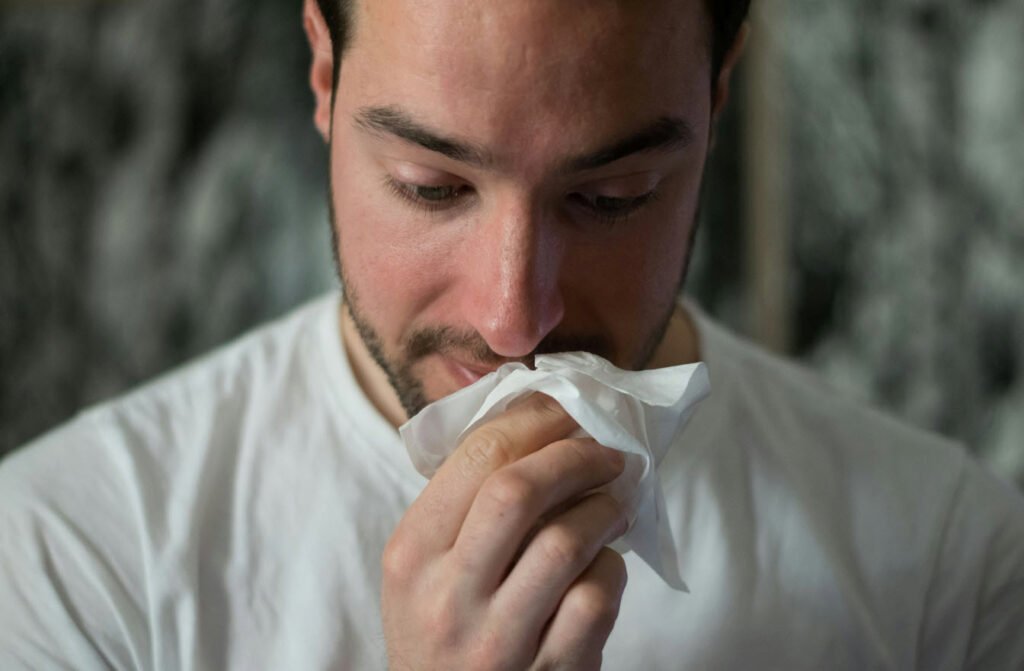For many people, allergies are a year-round struggle, causing symptoms such as sneezing, coughing, itchy eyes, and congestion. Living with allergies can be frustrating, and managing symptoms can feel like a never-ending task. However, with the right knowledge and tools, you can minimize allergic reactions and improve your quality of life.
In this article, we’ll explore practical tips and tricks to help you effectively fight allergies and regain control over your symptoms.
1. Know Your Triggers
The first step to managing allergies is understanding what triggers your symptoms. Common allergens include pollen, dust mites, pet dander, mold, and certain foods. Identifying what causes your allergic reactions will help you take appropriate steps to avoid exposure.
To pinpoint your triggers:
– Consider seeing an allergist for a skin or blood test to identify specific allergens.
– Keep a journal to track when and where your symptoms flare up. This can help you spot patterns related to seasonal changes or environmental factors.
Once you know your triggers, it’s easier to make lifestyle adjustments to reduce exposure.
2. Avoid Outdoor Allergens
If you’re allergic to outdoor allergens like pollen, taking precautions when spending time outside is essential. Pollen levels tend to be highest during certain times of the day and in specific weather conditions.
Strategies to minimize exposure to pollen include:
Keep Windows Closed: Especially in the morning and evening when pollen counts are at their peak. Use air conditioning instead to keep your home cool.
Monitor Pollen Counts: Many weather apps and websites provide daily pollen forecasts. Plan outdoor activities when pollen levels are low, typically in the late afternoon or after rain.
Wear Sunglasses and Hats: When spending time outdoors, wearing sunglasses and a wide-brimmed hat can help prevent pollen from getting into your eyes and hair.
Change Clothes and Shower After Being Outside: Pollen can cling to clothing, skin, and hair, so showering and changing into fresh clothes after being outdoors can prevent allergens from spreading inside your home.
3. Control Indoor Allergens
Indoor allergens, such as dust mites and mold, can worsen symptoms for allergy sufferers. Making your home as allergen-free as possible is crucial for long-term relief.
Here’s how you can reduce allergens inside your home:
Use HEPA Filters: High-Efficiency Particulate Air (HEPA) filters can capture tiny particles, including dust mites, pet dander, and mold spores. Consider using a HEPA air purifier and vacuum cleaner to keep your home clean.
Wash Bedding Frequently: Dust mites thrive in bedding, so washing your sheets, pillowcases, and blankets in hot water (at least 130°F or 54°C) weekly can reduce allergens.
Minimize Carpeting and Upholstered Furniture: These items tend to trap allergens like dust and pet dander. If possible, replace carpets with hardwood or tile flooring and use washable rugs.
Clean Air Ducts: Ensure your heating, ventilation, and air conditioning (HVAC) system is cleaned regularly to prevent the spread of dust and mold through your home.
4. Manage Pet Allergies
If you’re allergic to pet dander but have a furry friend at home, you don’t necessarily need to give up your pet. However, taking precautions can help minimize symptoms.
Your bedroom should be a pet-free zone, as you spend many hours in this space. This will reduce your exposure to dander while sleeping.
Regular grooming and bathing can help reduce the amount of dander on your pets. Ask someone without allergies to do the grooming if possible. A HEPA air purifier can help trap pet dander in the air and reduce its presence in your living spaces.
5. Avoid Using Humidifiers
While humidifiers can help people with colds by moisturizing the air, they are not recommended for allergy sufferers. Moist air creates an ideal environment for dust mites and mold to thrive, both of which can trigger allergic reactions.
If you want to control humidity levels, aim for a humidity level between 30-50%. Consider using a dehumidifier to keep your home’s air at a comfortable moisture level without encouraging allergen growth.
6. Time Your Outdoor Activities Wisely
Knowing when and where allergens are at their highest can make a significant difference in managing symptoms. Outdoor allergens, especially pollen, are affected by time of day and weather conditions.
Timing tips:
Avoid Outdoor Activities Between 10 a.m. and 4 p.m.: Pollen levels are typically highest during this time. Plan your outdoor activities, such as exercising or gardening, for the late afternoon or early evening.
Check the Weather: Pollen counts tend to spike on hot, dry, and windy days. On these days, try to stay indoors as much as possible, or wear a mask if you need to go outside.
7. Use Over-the-Counter Medications
Over-the-counter (OTC) antihistamines can be very effective in managing seasonal allergies. These medications block the release of histamine, a chemical in the body that causes allergy symptoms such as sneezing, runny nose, and itchy eyes.
Some common OTC antihistamines include:
- Loratadine (Claritin)
- Cetirizine (Zyrtec)
- Fexofenadine (Allegra)
While these medications can provide relief, be aware of their side effects. Some antihistamines, especially older ones like diphenhydramine (Benadryl), can cause drowsiness. Always read the label and take these medications as directed.
8. Clean with Allergy-Friendly Products
When cleaning your home, it’s important to use products that are effective at removing allergens but are also safe for people with allergies. Some cleaning products contain harsh chemicals that can irritate the lungs or skin, making allergy symptoms worse.
Tips for allergy-friendly cleaning:
Use Fragrance-Free and Hypoallergenic Products: These products are less likely to cause reactions or irritate your skin.
Disinfect Mold-Prone Areas: Use a fungicide to clean areas where mold might grow, such as bathrooms and basements. Make sure to wear gloves and a mask while cleaning moldy areas.
Dust Regularly: Dust surfaces with a damp cloth to trap dust rather than spreading it into the air. Avoid using dry dusters or feather dusters, which can disperse dust particles.
9. Avoid Drying Clothes Outdoors
Drying your clothes outdoors might seem like a great way to save energy, but for people with allergies, it can be problematic. Pollen and other airborne allergens can settle on clothes while they are hanging outside, increasing your exposure when you wear them.
To prevent this, dry your clothes indoors using a dryer, especially during allergy season. This will help keep allergens out of your home and off your skin.
10. Stay Hydrated
Allergies can cause dehydration, especially if you’re constantly sneezing, coughing, or blowing your nose. Staying hydrated can help thin mucus and reduce congestion, making it easier to breathe.
Hydration tips:
Drink Plenty of Water: Aim for at least 8 glasses of water per day to stay hydrated and help flush allergens out of your system.
Avoid Caffeinated or Sugary Drinks: These can dehydrate you and worsen your symptoms.
Conclusion
Living with allergies can be challenging, but by following these tips and tricks, you can effectively manage your symptoms and improve your overall well-being. Whether it’s reducing your exposure to allergens, timing your outdoor activities, or using allergy-friendly cleaning products, small changes can make a big difference.
Be proactive in identifying your triggers and taking steps to minimize their impact. With the right approach, you can live more comfortably, even during peak allergy season.



